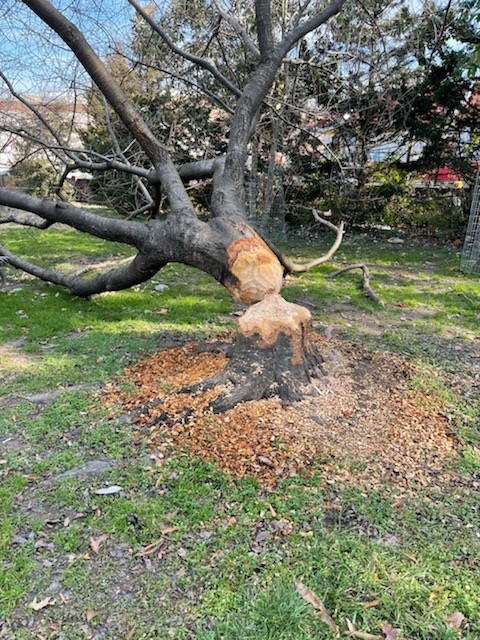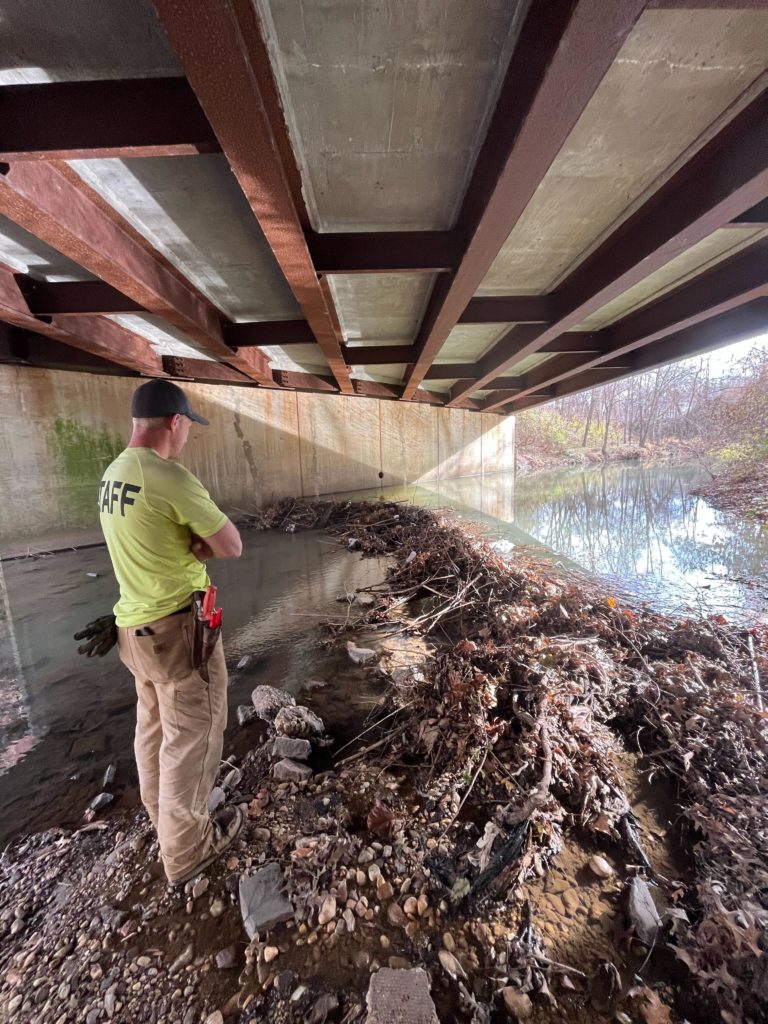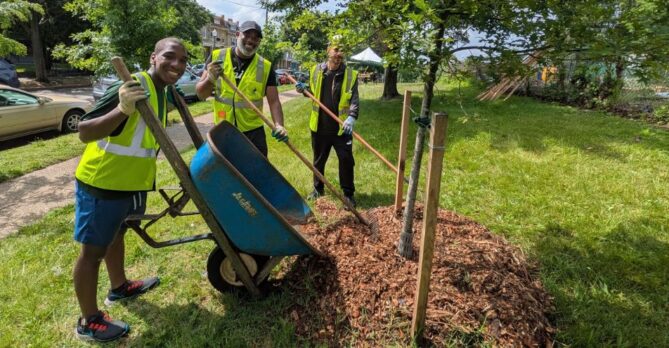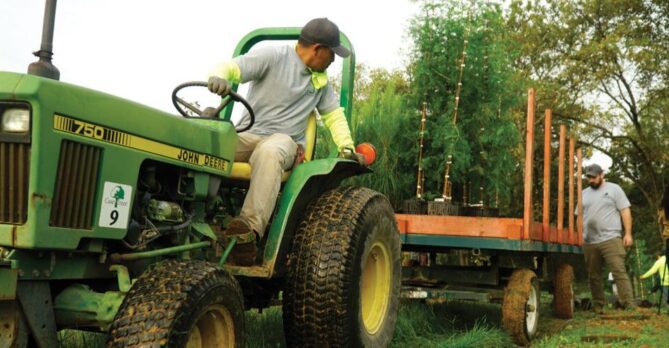
When it comes to protecting trees from animals in urban contexts, we are well versed and familiar with strategies to prevent damage from deer and dogs. One unexpected animal we have a surprising amount of experience with? A beaver!

Although you will probably never see North American beavers (Castor canadensis) in the District because they mostly work at night (and they’re not abundant here), look carefully, and you might see their work. One commonplace to spot their handiwork is Marvin Gaye Park where we recently spent a day helping the Urban Forestry Division protect young trees from literal eager beavers.

For now, our strategy is to provide reinforced fencing and monitoring to protect the trees from the beavers. We were able to donate fencing and some of the crew’s time to assist in setting them up. While their presence is a welcome sign of a habitable environment, they’re also a disturbance as they fell trees we so dutifully care for and protect. Ah, the many joys of urban forestry work – just when you think you’ve seen it all you come across an established beaver dam in the middle of a city!
Marvin Gaye Park isn’t the only place where beavers have been spotted. We’ve also helped out the National Park Service (NPS) to protect against beaver damage at Kenilworth Aquatic Gardens. Along the C&O Canal and even the Tidal Basin, you can spot beaver-damaged trees that look chewed off in great chunks just off the ground. This has been an off-and-on problem for the Tidal Basin’s cherry trees where NPS sometimes wraps guards around the base of trees to discourage the nocturnal non-hibernating wood-cleaving rodent. In ’99 a beaver managed to fell four trees in the basin before being caught. Last March, a beaver was spotted near the Wharf. Keep a watchful eye out for their woodwork, but it is a sign of a healthy and diverse urban forest!

